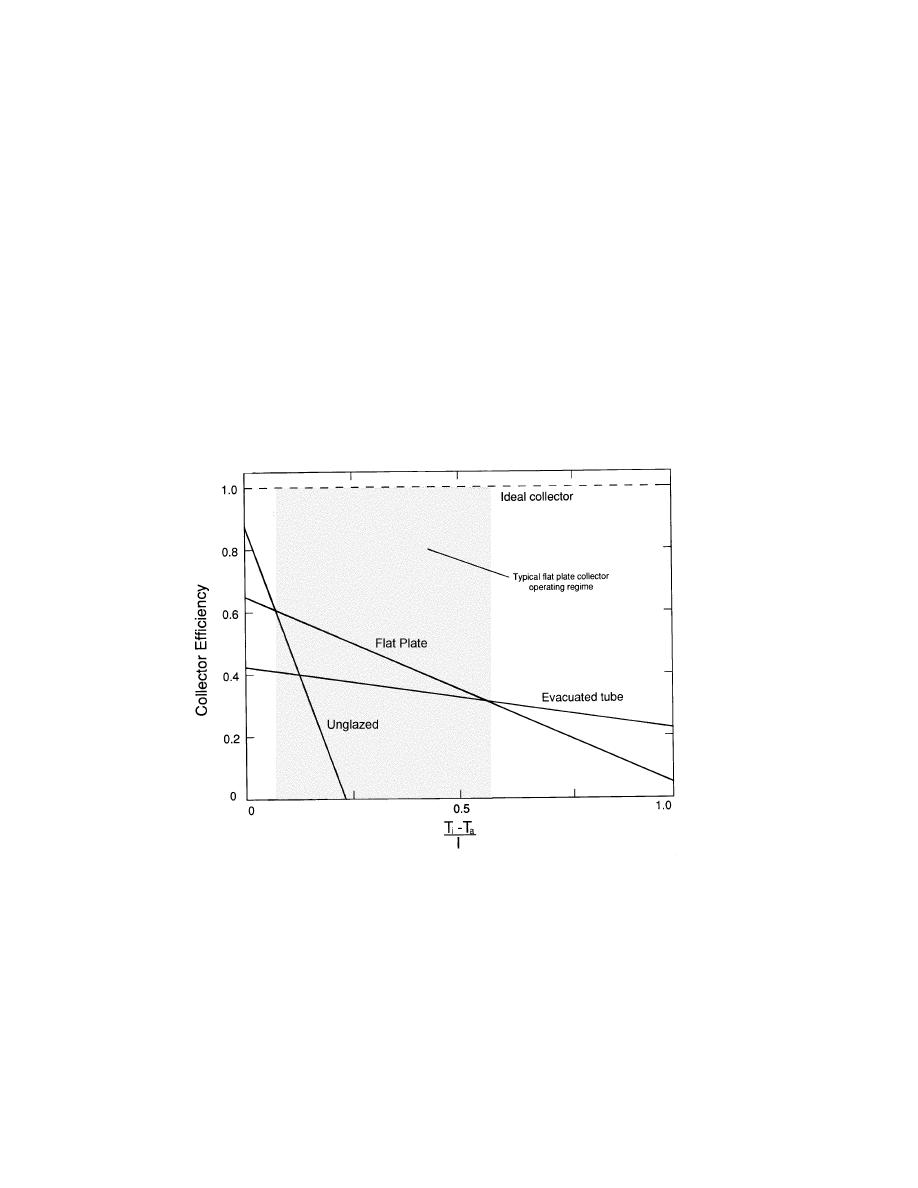
UFC 3-440-01
14 June 2002
values depend on the specific application and system type. Each collector type
operates most efficiently in a certain region of the plot, which corresponds to different
operating conditions or applications. For example, the unglazed collector works very
well under conditions of high solar radiation levels and small temperature differences
between the collector fluid and the outdoor temperature (this condition corresponds to
the left-hand side of plot). Glazed collectors are better insulated from the outdoor
environment and are therefore less sensitive to the solar radiation level and outdoor
temperature (shaded region of plot). Evacuated tube collectors are the best insulated
of the three types, and will outperform the others at higher operating temperatures
(right-hand side of plot). In general, the left-hand side of the plot corresponds to low
temperature applications such as swimming pool heating and the shaded region to
service water heating and building space heating. The right-hand side is most
applicable to high-temperature processes such as space cooling. An ideal collector is
illustrated at the top of the plot, with FRta equal to one and FRUL equal to zero.
Figure F-3. Typical Solar Collector Efficiency Plots
(f) Performance Ratings. The established test for defining the
efficiency parameters of solar collectors is ASHRAE Standard 93. This test is
performed by independent laboratories and should be available from collector
manufacturers.
c. Collector Array. Individual collectors are normally connected together into
groups called "banks". These banks are then piped together to form the complete
collector array. Proper sizing of these banks is required to maintain uniform flow
throughout the collector array. For efficient system performance, the flow must be
balanced throughout the entire array.
F-7


 Previous Page
Previous Page
